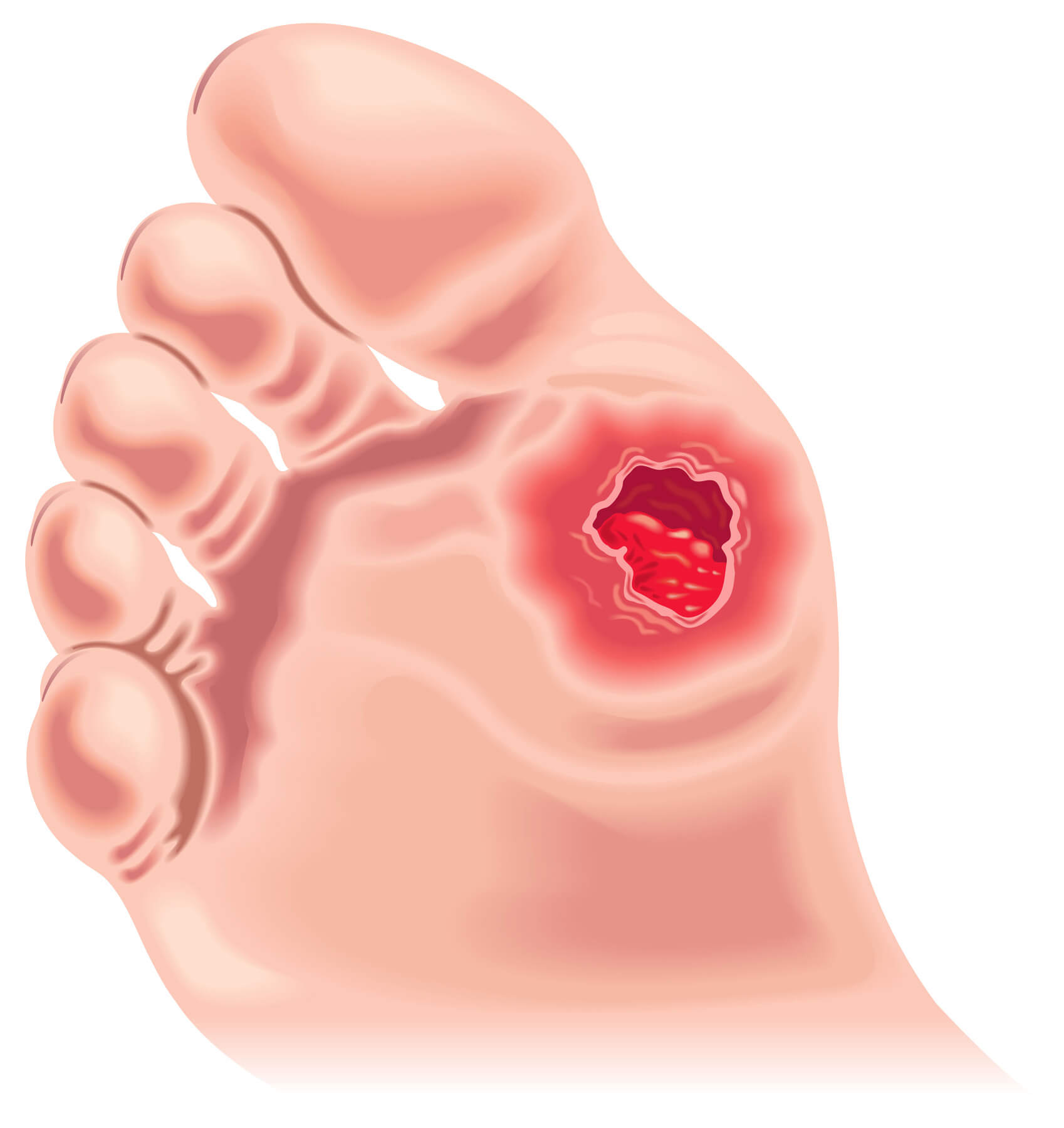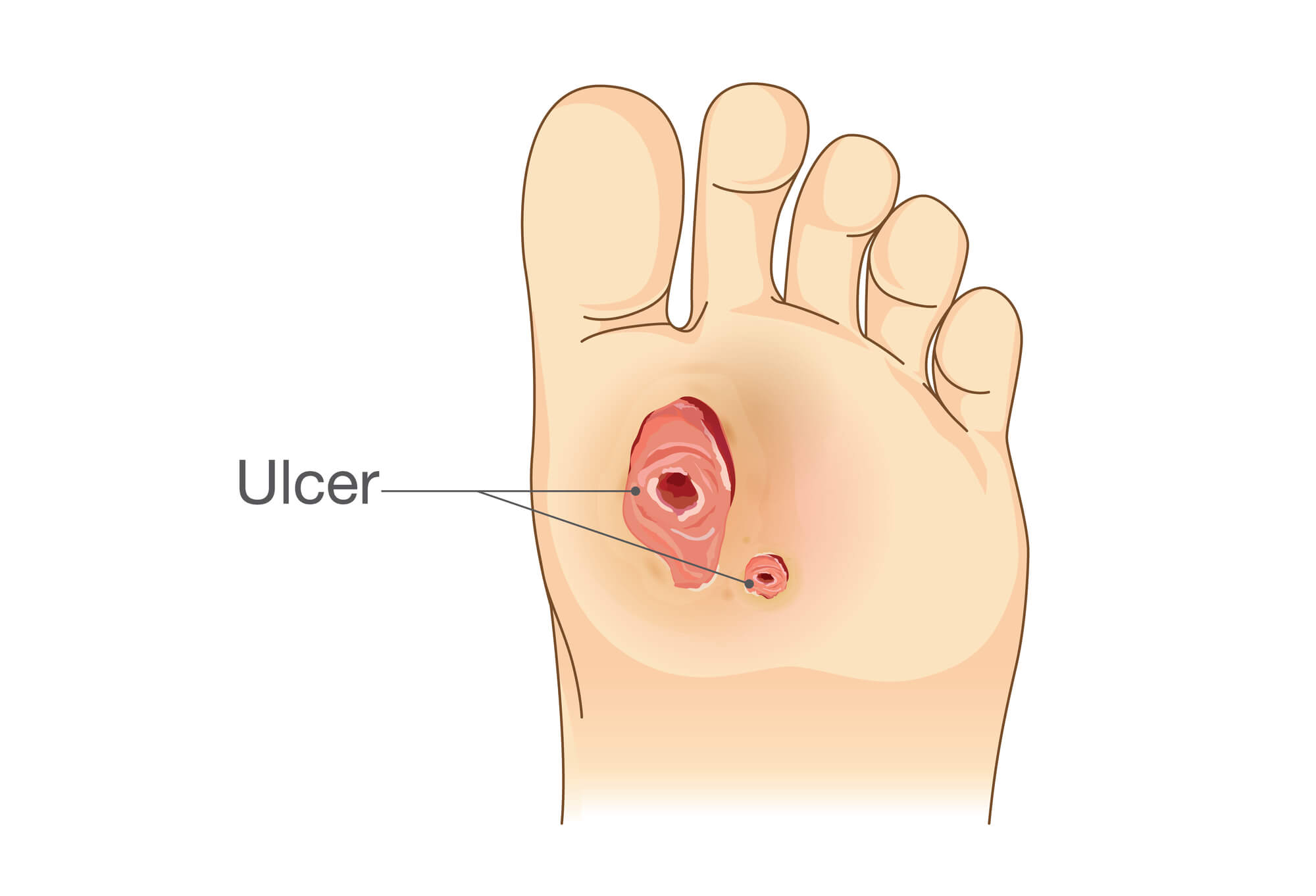Types of Foot Ulcers
Foot ulcers are open sores that develop on the feet, usually on the sole or around the toes. They can be shallow or deep and often result from an injury, poor circulation, or nerve damage. They can be very painful, and if left untreated, they can lead to serious complications. In this article, we'll discuss the different types of foot ulcers, common foot conditions affecting many people. We'll cover their causes, symptoms, and treatments so that you can identify and manage them effectively.
What are Foot Ulcers?
Foot ulcers are a common foot problem that occurs when a break in the skin or wound fails to heal. Ulcers are open sores that can appear anywhere on the foot, including the heel, the inner part of the leg, and the surrounding skin. Ulcers can develop for various reasons, such as nerve damage, poor circulation, pressure points, injury, or infection. Specific medical conditions like diabetes, neuropathy, varicose veins and arterial or venous insufficiency can cause some ulcers.
Types of Foot Ulcers
Diabetic Foot Ulcers
Diabetic foot ulcers are a common complication of diabetes, a condition that affects millions of people worldwide. These ulcers often develop on the bottom of the foot and can be very slow to heal. People with diabetes risk developing ulcers due to poor blood flow to the feet and nerve damage that can reduce sensation. Foot wounds in diabetic patients can be very dangerous; if they become infected, they can lead to amputation.

Venous Stasis Ulcers
Venous stasis ulcers are a type of foot ulcer that develops due to poor blood flow in the veins. They are more common in older people and those with circulation problems. These ulcers often occur on the lower leg or ankle and can be very painful. They tend to be shallow and are surrounded by a red halo. The skin around the ulcer may be dry, itchy, or flaky.
Arterial Ulcers
Arterial ulcers develop due to poor blood flow in the arteries, which can cause tissue damage and skin breakdown. They are more common in people with peripheral artery disease, which affects blood vessels in the legs and feet. Arterial ulcers can be very painful and difficult to heal. They often occur on the toes, heels, or other areas where pressure is applied.
Neuropathic Ulcers
Neuropathic ulcers develop due to nerve damage, reducing foot sensation and making it difficult to feel pain. They are common in people with conditions that affect the nerves, such as diabetes, and often occur on the sole. Neuropathic ulcers can be painless but can lead to serious complications if left untreated.
Symptoms of Foot Ulcers
The symptoms of foot ulcers can vary depending on the type of ulcer. Still, they often include redness and swelling around the ulcer, pain or tenderness in the affected area, drainage or pus from the ulcer, a foul odor, and warm skin to the touch. If you experience any of these symptoms, seeking medical attention immediately is important.

Treatment for Foot Ulcers
The treatment for foot ulcers depends on the type of ulcer and its severity. In general, treatment may include cleaning and dressing the ulcer to prevent infection, reducing pressure on the affected area to promote healing, antibiotics to treat or prevent infection, medications to improve circulation or control blood sugar levels, surgery to remove dead tissue or repair damaged blood vessels, or wound care to help the ulcer heal. Your podiatrist will develop a treatment plan that's tailored to your individual needs, so it's important to seek their advice if you have an ulcer.
If you have diabetes, it's crucial to take extra precautions to prevent foot ulcers from occurring. Poor circulation and nerve damage can make it difficult to feel pain or sensation in your feet, making it easy for a wound to go unnoticed. To reduce your risk of developing ulcers, it's important to control your blood sugar levels, inspect your feet regularly, wear properly fitting shoes and socks, and avoid walking barefoot.
It's also important to seek medical attention immediately if you notice any signs of a foot ulcer, such as redness, swelling, or a sore that won't heal. Your podiatrist can help you manage your ulcer and prevent complications like infection or amputation.
In addition to medical treatment, some home remedies and lifestyle changes can help manage foot ulcers. For example, elevating your feet, practicing good wound care, and avoiding smoking can all help promote healing and prevent complications. Your podiatrist can guide the best strategies for managing your ulcer.
Conclusion
Foot ulcers are a common foot condition that can be painful and lead to serious complications if left untreated. Understanding the different types of foot ulcers and their causes, symptoms, and treatments, you'll be better equipped to identify and manage them effectively. If you have an ulcer or suspect you might have one, seek medical attention right away to prevent further complications. Remember to inspect your feet regularly, manage your blood sugar levels, and take precautions to reduce your risk of developing foot ulcers. Request an appointment with a podiatrist today to learn more about caring for your feet and keeping them healthy.

